Operation Slipper
| Operation Slipper | |
|---|---|
| Part of the War in Afghanistan (2001–2014) | |
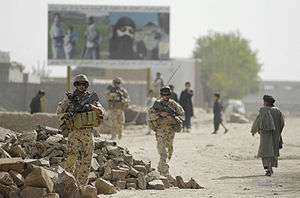 Infantry from 3 RAR patrol Tarin Kowt in August 2008 as part of Reconstruction Task Force 4 | |
| Location | Afghanistan, the Persian Gulf and Diego Garcia |
| Objective | Australia's contribution to the War in Afghanistan |
| Date | 2001 – 31 December 2014 |
| Casualties | 41 killed, 261 wounded[1] |
Operation Slipper was the Australian Defence Force (ADF) contribution to the war in Afghanistan. The operation commenced in late 2001 and ended on 31 December 2014, being replaced by Operation Highroad. The scope of the operation and size of the forces deployed have varied over the course of the operation and ADF involvement has included two major activities centred on Afghanistan and the Persian Gulf. These activities have seen the deployment of naval, air and land forces that have taken part in combat and combat support operations as part of a coalition of forces from several countries including the United States, Britain and other NATO countries. In mid-2014, the operation's scope was limited by the Australian government and several components, such as the naval and logistic support operations in the Persian Gulf, were re-designated as separate operations designated "Manitou" and "Accordion".
Afghanistan
First phase
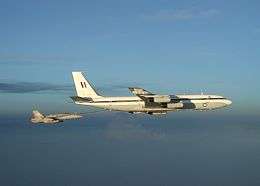
During the first phase of Operation Slipper, the Australian Defence Force (ADF) commitment to Afghanistan consisted of a Special Forces Task Group and two Royal Australian Air Force (RAAF) Boeing 707 air-to-air refuelling aircraft from No. 33 Squadron. These aircraft and associated support personnel operated from Manas Air Base in Kyrgyzstan and provided support to coalition aircraft operating in Afghan airspace. Two RAAF AP-3C Orion aircraft flew maritime patrol missions in support of maritime interdiction operations in the Persian Gulf.[2] These aircraft were temporarily retasked to Operations Falconer and Catalyst in 2003.
RAAF C-130 Hercules transport aircraft were also involved in providing logistic support for deployed forces. The Special Forces were involved with the establishment of the US-led coalition's first Forward Operating Base (Camp Rhino) southwest of Kandahar in November 2001, followed by the capture of Kandahar International Airport in December 2001. The initial ADF commitment in Afghanistan concluded in December 2002 when the Special Air Service Task Group was withdrawn.[3] Following this date until 2005 Australia's total contribution to efforts in Afghanistan were two officers attached to the United Nations and the Coalition land mine clearing force.[4]
All three squadrons of the Australian Special Air Service Regiment (SASR) were deployed to Afghanistan in 2001 and 2002. The dates of these deployments were:[5]
- 1 Squadron Group, SASR: (October 2001 – April 2002)
- 3 Squadron Group, SASR: (April 2002 – August 2002)
- 2 Squadron Group, SASR: (August 2002 – November 2002)
Second phase
An Australian Special Forces Task Group was re-deployed to Afghanistan in August or September 2005. This Task Group consisted of elements from the SASR, 4th Battalion, Royal Australian Regiment (Commando), the Incident Response Regiment and logistic support personnel.[3] As well as heavily modified Land Rovers, the Special Forces Task Group was also equipped with some Bushmaster infantry mobility vehicles. A detachment of two CH-47 Chinook helicopters from the 5th Aviation Regiment was deployed to Afghanistan in March 2006 to support the Special Forces Task Group. The Australian Special Forces Task Group was withdrawn from Afghanistan in September 2006 and the helicopter detachment returned to Australia in April 2007.[6]
Third phase

A Reconstruction Taskforce-based around the 1st Combat Engineer Regiment with protective elements from the 5th/7th Battalion, Royal Australian Regiment, 6th Battalion, Royal Australian Regiment and 2nd Cavalry Regiment began arriving in Orūzgān Province in southern Afghanistan in early September 2006. The Australian Reconstruction Taskforce formed part of a Dutch-led Provincial Reconstruction Team, operating as part of the Dutch-led Task Force Uruzgan and based at Forward Operating Base Ripley, outside of Tarin Kowt.[7]
A 300-strong Special Operations Task Group was deployed to support the Reconstruction Taskforce in April 2007, including a Commando company-group, elements of the SASR, and an integral combat service support team. In addition to radar crews, logistics and intelligence officers, and security personnel, this brought the number of Australian personnel in Afghanistan to 950 by mid-2007, with further small increases to 1,000 in mid-2008, 1,100 in early 2009[8] and 1,550 in mid-2009.[9] These increases occurred in spite of opinion polls indicating that public support for the deployment was decreasing, with a poll released in September 2008 finding that a majority of those surveyed were opposed to Australia's continued military involvement in the country.[10]
In early 2009, a number of Operational Mentoring and Liaison Teams (OMLTs) were embedded into the Afghan National Army battalions serving in the 4th (ANA) Brigade, 205th Hero Corps, in Uruzgan as part of the Australian mission to mentor and partner the ANA within the province. Consequently, the RTF was renamed the Mentoring and Reconstruction Task Force.[9] On 16 January 2009, Trooper Mark Donaldson, a member of the SASR, was awarded Australia's highest gallantry medal, the Victoria Cross for Australia. Donaldson was awarded the medal for exposing himself to enemy fire to protect injured Australian troops and then rescuing an Afghan interpreter under heavy enemy fire during a contact on 2 September 2008.[11]
A modest Australian force remained in Afghanistan over this period and was involved in counter-insurgency operations in Uruzgan province in conjunction with Dutch, US and other coalition forces. MRTF was again renamed to the Mentoring Task Force in early-2010. Based around a combined arms battalion-sized battle group, it consisted of motorised infantry and cavalry force elements supported by engineers, as well as coalition enablers including artillery and aviation assets. The Rotary Wing Group flying CH-47D Chinooks, the Force Logistics Asset and an RAAF air surveillance radar unit were also based in Kandahar.[12][13] A further 800 Australian logistic personnel were also based in the Middle East in support of Operation Slipper, but were located outside of Afghanistan.[9] Meanwhile, detachments of maritime patrol and transport aircraft continued to support operations in Iraq and Afghanistan, based out of Al Minhad Air Base in the United Arab Emirates.[14]
Order of battle


Over the course of the operation, as the size of Australia's contribution has fluctuated and the scope of operations undertaken has evolved, the number and type of units deployed has also changed. A snapshot of the order of battle from March 2011, when approximately 1,550 Australians were deployed to Afghanistan, is as follows:[15]
- National Command Element
- Mentoring Task Force 2 (MTF-2)
- Headquarters, 5th Battalion, Royal Australian Regiment (5 RAR)
- 4 x Combat Teams including infantry, cavalry, engineers and offensive support
- 5 x Operational Mentoring and Liaison Teams
- Force Communications Unit IV (1st Combat Signal Regiment)
- Logistics and support units
- Detachment, 20th Surveillance and Target Acquisition Regiment, Royal Australian Artillery (operates ScanEagle UAVs)
- Special Operations Task Group
- Elements of the SASR, 1 CDO, 2 CDO and the Incident Response Regiment
- Rotary Wing Group (including two CH-47D Chinooks helicopters).
- Detachment, 1st Regiment, Royal Australian Artillery (16 gunners attached to the British Army)
- RAAF Control and Reporting Centre (Kandahar International Airport)
- Two AP-3C Orion maritime patrol aircraft and three C-130 Hercules transports
- Personnel embedded with various coalition units
- Force Level Logistic Asset (Kandahar International Airport)
- Mentoring Task Force 2 (MTF-2)
Scheduled departure of Australian forces
At the end of October 2013, Prime Minister Tony Abbott traveled to Afghanistan with Opposition Leader Bill Shorten for a special ceremony at the Australian base in Tarin Kowt in Uruzgan. He told a gathering of troops and Afghan leaders that "Australia's longest war is ending. Not with victory, not with defeat, but with, we hope, an Afghanistan that is better for our presence here." Afghan forces were scheduled to take over running of the camp in mid-December. The last combat troops were withdrawn on 15 December 2013; however, approximately 400 personnel remain in Afghanistan as trainers and advisers, and are stationed in Kandahar and Kabul.[16][17]
On 1 July 2014, as part of the restructuring of Australian operations in the Middle East, Operation Slipper was split into three different operations: ongoing operations in Afghanistan as part of ISAF under Operation Slipper; maritime security operations in the Middle East and counter piracy in the Gulf of Aden under Operation Manitou; and support operations to Slipper and Manitou from a number of locations in the Gulf States, primarily the United Arab Emirates, under Operation Accordion. Approximately 400 personnel are deployed on Operation Slipper, another 550 as part of Accordion, and 250 on Manitou. Australian operations in Afghanistan were scheduled to continue until the ISAF mission concludes in December 2014, while its contribution to the NATO-led "train, advise, assist" mission post-2014 was still to be confirmed.[18] The final Heron UAV detachment left Afghanistan in December 2014.[19]
Operation Slipper concluded on 31 December 2014, with Australia's "train, advise and assist" mission in Afghanistan as part of the NATO-led Resolute Support Mission being conducted under the code-name Operation Highroad after this date. Approximately 400 Australian personnel are deployed as part of the new mission, including personnel in mentoring and advisory roles, as well as medical personnel, force protection and logistic support.[20] Over 26,000 Australian personnel have served in Afghanistan.[21]
Persian Gulf

Since October 2001 the Royal Australian Navy (RAN) has maintained a continuous presence in and around Iraqi territorial waters as part of Operation Slipper and subsequent operations. There were four major rotations of RAN ships to this area of operations between December 2001 and March 2003. The primary focus of these rotations was to conduct Maritime Interception Operations as part of a US, Australian and British force enforcing United Nations Security Council resolutions against Iraq. The first rotation consisted of Her Majesty's Australian Ships (HMAS) Sydney, Adelaide and Kanimbla. These ships were followed in February 2002 by HMA Ships Canberra, Newcastle and Manoora and again in July 2002 by HMAS Arunta and Melbourne.[22]
HMAS Kanimbla departed from Sydney, Australia on 20 January 2003 again bound for the Persian Gulf under the mission objectives of Operation Bastille. On arriving in Bahrain on 16 February she reverted to the original mission objects of Operation Slipper (that of enforcing UN sanctions against Iraq). On 20 March 2003, HMA Ships Kanimbla, Anzac and Darwin participated in the combat phase of the 2003 Iraq War, codenamed Operation Falconer; in April Kanimbla supported Operation Baghdad Assist, delivering medical supplies that were transported to Baghdad.[22] During these operations the Australian ships pioneered a number of techniques that increased the effectiveness of Maritime Interception Force operations leading to them intercepting and boarding about 1,700 vessels in this period. Four Australian naval officers commanded the multinational force at various times during the course of the operation. Detachments from the Army's 16th Air Defence Regiment provided point defence to the Kanimbla and Manoora during their deployments.[23]
From 2009 Australian warships and aircraft in the Middle East have also been involved in counter-piracy operations and maritime interdiction off the Horn of Africa as part of Combined Task Force 151.[24]
Diego Garcia
A detachment of four Australian F/A-18 Hornet fighter aircraft provided air defence for the US military base on the island of Diego Garcia, British Indian Ocean Territory during the campaign against the Taliban. The initial detachment was provided by No. 77 Squadron RAAF between December 2001 and 10 February 2002. This was replaced by a detachment from No. 3 Squadron RAAF which was deployed between 10 February 2002 and 20 May 2002. No further Australian units were deployed to Diego Garcia.[25]
Casualties
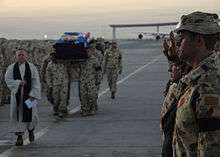
Operation Slipper is notable for the first Australian combat deaths since the Vietnam War, and to date all casualties have occurred during operations in Afghanistan.[26] 41 Australian soldiers have been killed and 261 wounded, the majority since October 2007.[1][27][28] Another Australian was killed while serving with the British Army.[27][29]
Timeline
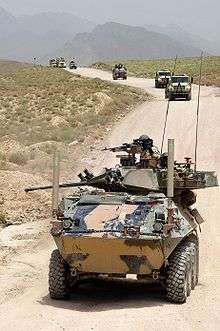
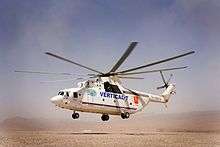

| 2001 |
|
| 2002 |
|
| 2006 |
|
| 2007 |
|
| 2008 |
|
| 2009 |
|
| 2010 |
|
| 2011 |
|
Cost
The cost of Operation Slipper has represented the largest operation expenditure for most of its operational life. Below is the yearly expenditure on Operation Slipper of the Australian Defence Force.
| Year | 2007 | 2008 | 2009 | 2010 | 2011 | 2012 | 2013 | 2014 | 20151 | 20161 |
|---|---|---|---|---|---|---|---|---|---|---|
| Cost (A$ million) | $575.3[51] | $661[52] | $1381.1[52] | $1100[53] | $1221.8[53] | $1700[54] | $1800[55] | $122[56] |
- ^1 While Operation Slipper ceased on31 December 2014, funds have been allocated to repair equipment returned to Australia and to contribute to the sustainment of the Afghan National Security Forces.
See also
- Australian Army
- Civilian casualties of the U.S. invasion of Afghanistan
- Coalition casualties in Afghanistan
- International public opinion on the war in Afghanistan
- International Security Assistance Force
- Taliban insurgency
Notes
- 1 2 Afghan insurgents gaining control of territory around former Australian base in Tarin Kowt
- ↑ "Operation SLIPPER Afghanistan". Department of Defence. Retrieved 2009-01-06.
- 1 2 Neville (2008). Special Operations Forces in Afghanistan. p. 30.
- ↑ Brangwin, Nicole; Rann, Ann (16 July 2010). "Australia's Military Involvement in Afghanistan Since 2001: A Chronology". Parliament of Australia. Retrieved 15 October 2014.
- ↑ Neville (2008). Special Operations Forces in Afghanistan. p. 29.
- ↑ Dennis et al 2008, pp. 7–9.
- ↑ Dennis et al 2008, pp. 7–8.
- ↑ Australia to double Afghan force. bbc.co.uk. Date: 2007-4-10. Accessed: 2007-4-12.
- 1 2 3 "Global Operations – Department of Defence". Australian Department of Defence. Retrieved 2009-04-15.
- ↑ "Government losing support for Afghanistan campaign". ABC News. 29 September 2008. Retrieved 2008-09-30.
- ↑ "Australian SAS soldier Mark Donaldson awarded Victoria Cross". The Australian. 16 January 2009. Retrieved 2009-01-16.
- ↑ Dennis et al 2008, p. 9.
- ↑ Connery, Cran and Evered 2012, pp. 9–17.
- ↑ "Al Minhad Air Base - Global Collaborative". Australian Bases Abroad. Nautilus Institute. 2009. Archived from the original on 4 December 2008. Retrieved 13 January 2010.
- ↑ "Global Operations". Department of Defence. Retrieved 2009-09-20.
- ↑ "Under heavy security, PM Tony Abbott visits Afghanistan and declares war over". News Corp Australia Network. 29 October 2013.
- ↑ "Tony Abbott makes first visit to Afghanistan as PM, says Australia's longest war is ending". ABC News.
- ↑ "Changes to Middle East Operations now in place" (Press release). Department of Defence. 30 June 2014. Retrieved 24 August 2014.
- ↑ McLaughlin, Andrew (3 December 2014). "RAAF Heron detachment completes Afghan mission". Australian Aviation. Retrieved 11 December 2014.
- ↑ "Australia supports new mission in Afghanistan" (Press release). Department of Defence. 31 December 2014. Retrieved 1 January 2015.
- ↑ O'Neill, Clare (24 April 2015). "Dichotomy of hope". Australian Army. Retrieved 5 August 2015.
- 1 2 "Database of Royal Australian Navy Operations, 1990–2005" (PDF). Working Paper No. 18. Sea Power Centre. Archived from the original (PDF) on 27 February 2012. Retrieved 24 August 2014.
- ↑ "16 Air Defence Regiment History". Australian Air Defence Artillery Association. Retrieved 13 September 2012.
- ↑ McPhedran, Ian (29 May 2009). "Navy warship and RAAF spy planes join fight against Somali pirates". Daily Telegraph (Sydney: News Limited). p. 11. ISSN 1836-0203.
- ↑ "Australia’s military involvement in Afghanistan since 2001: A Chronology". aph.gov.au.
- ↑ "Tributes flow for fallen SAS sergeant". Melbourne: The Age. 25 October 2007. Retrieved 2007-10-28.
- 1 2 "Combat casualties". Australian Operation in Afghanistan. Australian Department of Defence. Retrieved 2016-02-12.
- ↑ "Australian soldier killed in Afghanistan". Department of Defence. 10 July 2010. Retrieved 10 July 2010.
- ↑ "Rifleman Stuart Nash killed fighting with British Forces". The Australian. 19 December 2008. Retrieved 2008-12-26.
- ↑ Garibay, Spc Edward (19 March 2011). "Australia contracts new gigantic helicopter for Afghanistan". 16th Mobile Public Affairs Detachment. Defense Video and Imagery Distribution (DVIDS)). Retrieved 7 February 2012.
- ↑ Dennis et al (2008), p. 8.
- ↑ "Diggers 'killed 150 in Afghanistan'". news.com.au. 12 September 2006. Retrieved 2009-01-11.
- ↑ "Special Operations Task Group Soldiers Wounded in Afghanistan - Update". Australian Department of Defence. 4 September 2008. Retrieved 2009-05-09.
- 1 2 McPhedran, Ian (25 April 2009). "Australian soldiers have killed more than 100 Taliban". news.com.au. Retrieved 10 November 2010.
- ↑ "Pressure Mounts as another Taliban Leader is Killed". Australian Department of Defence. 6 May 2009. Retrieved 14 May 2010.
- ↑ "Australian Dog Returns Home After A Year In The Wilderness" (Press release). Department of Defence. 12 November 2009. Archived from the original on 11 November 2009. Retrieved 14 November 2009.
- ↑ "Handler never gave up on lost army dog". ABC News. 12 November 2009. Archived from the original on 14 November 2009. Retrieved 14 November 2009.
- ↑ "Anzac Day in Gizab" (Press release). Department of Defence. 24 April 2010. Retrieved 2010-06-16.
- ↑ "Afghan Civilians Help Police Repel Taliban Attack". www.defense.gov. American Forces Press Service. 16 June 2010. Retrieved 18 July 2010.
- ↑ "Combat Operations: Afghanistan". Australian and New Zealand Defender (Brisbane: Fullbore Magazines) (71): 36. Spring 2010. ISSN 1322-039X.
- ↑ Insurgents driven out of Shah Wali Kot. Department of Defence. 16 June 2010. Retrieved 16 June 2010.
- ↑ "Corporal Benjamin Roberts-Smith, VC, MG". Citation - Victoria Cross for Australia. Department of Defence, Commonwealth of Australia. 23 January 2011. Retrieved 23 January 2011.
- ↑ Australian Associated Press (21 June 2010). "Three Australian soldiers killed in Afghanistan". The Age (Melbourne). Retrieved 21 June 2010.
- ↑ Nicholson, Brendan (22 June 2010). "Crash kills three Diggers in Afghanistan". The Australian. Retrieved 22 June 2010.
- ↑ Australian Associated Press (21 June 2010). "Three Australian soldiers killed in Afghanistan". The Age.
- ↑ "3 Aussie soldiers killed in Afghanistan". 3AW Radio. 21 June 2010. Retrieved 22 June 2010.
- ↑ "Battle of Derapet footage released" (Press release). Department of Defence. 17 September 2010. Retrieved 20 September 2010.
- ↑ "Australian Chinook crashes in Afghanistan". Australian Aviation. 1 June 2011. Retrieved 28 June 2011.
- ↑ Gary Ramage (9 September 2009). "Video: Battle of Doan". Herald Sun. Retrieved 15 December 2011..
- ↑ ABC (30 October 2011). "3 Australians killed". ABC. Retrieved 17 December 2011.
- ↑ 2007–08 Budget Summary: Chapter Two: Resourcing (PDF). Department of Defence. 2007. p. 23. Archived from the original (PDF) on 5 April 2014.
- 1 2 "Department of Defence PBS 2009–2010" (PDF). defence.gov.au.
- 1 2 "Australian Government, Department of Defence - Senator the Hon John Faulkner Minister for Defence". defence.gov.au.
- ↑ "Australian Defence Force (ADF) operations". aph.gov.au.
- ↑ "Defence Ministers: Minister for Defence – Budget 2012-13 Defence Operations Funding". defence.gov.au.
- ↑ Harper, Aaron (May 2015). "Defence Budget 2015-16" (PDF). Defence (Department of Defence). Retrieved 21 January 2016.
References
- Australian Department of Defence Operation Slipper
- Callinan, Rory (2005-06-06). "In the Valley of Death". Time. Retrieved 2008-09-21.
- Connery, David; Cran, David; Evered, David (2012). Conducting Counterinsurgency - Reconstruction Task Force 4 in Afghanistan. Newport, New South Wales: Big Sky Publishing. ISBN 9781921941771.
- Dennis, Peter; et al. (2008). The Oxford Companion to Australian Military History (Second ed.). Melbourne: Oxford University Press Australia & New Zealand. ISBN 978-0-19-551784-2.
- Luck, Darryl. "3 Squadron’s involvement in Operation Enduring Freedom and the War Against Terrorism". 3 Squadron Association official website. Retrieved 2008-09-21.
- Neville, Leigh (2008). Special Operations Forces in Afghanistan. Botley: Osprey. ISBN 978-1-84603-310-0.
Further reading
- Australian Army (2012). War in the Valleys - 7th Battalion Battle Group (MRTF-1) Afghanistan October 2008 to June 2009. Wilsonton: Mesh Publishing. ISBN 9780646564111.
- Australian Defence Force (2008). Rebuilding Afghanistan - The Story of Australia's 2nd Reconstruction Task Force. Salisbury, Queensland: Boolarong Press. ISBN 9781921054778.
- Blaxland, John (2014). The Australian Army from Whitlam to Howard. Port Melbourne, Victoria: Cambridge University Press. ISBN 978-1-107-04365-7.
- Connolly, Colonel Peter J. (Winter 2011). "Counterinsurgency in Uruzgan 2009" (PDF). Australian Army Journal VIII (2): 9–34. Retrieved 31 December 2011.
- Department of Defence (2012). Mentoring Task Force 3: 25 June 2011 to 24 Jan 2012. Fremantle, Western Australia: Fontaine Press.
- Lee, Sandra (2006). 18 Hours:The true story of an SAS war hero. Sydney: Harper Collins. ISBN 978-0-7322-8246-2.
- MRTF-2 (2010). Mentoring and Reconstruction Task Force 2 - June 2009 to February 2010. MRTF-2. OCLC 671456369.
- Mentoring Task Force Four Afghanistan 2012. 2013.
- McPhedran, Ian; Ramage, Gary (2014). Afghanistan: Australia's War. South Sydney, New South Wales: Harper Collins Publishers. ISBN 9780732299132.
External links
| Wikimedia Commons has media related to Military history of Australia during the 2001-present War in Afghanistan. |
- "Australian Government Fact Sheets on Afghanistan".
- Australia's military involvement in Afghanistan since 2001: a chronology - Australian Parliamentary Library
- Australian War Memorial: Afghanistan, 2001–present
| ||||||||||||||||||||||||||||||||||||||||||||||||||||||||
| ||||||||||||||||||||||||||||||||||
| ||||||